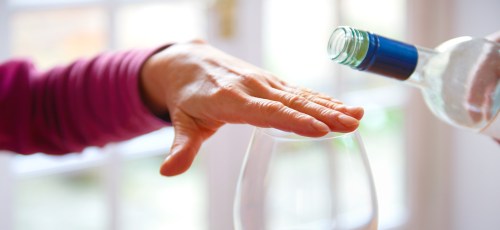When I imagined the high-tech future, I never pictured sitting in my Brooklyn apartment, relaxing into the pure bliss of being pummeled in the thigh by my massage gun. Still, it’s one of my simple pleasures in 2022. Yet this delight came crashing down a few weeks ago when I massage-gunned a bit too close to the sun (I hit my collarbone with the machine). I was fine, but the spot was tender for a few days—on top of the sore shoulder I’d been trying to soothe. This, however, got me thinking: Can massage guns can cause injuries? How do you know if you’re using them wrong?
Experts in This Article
physical therapist and co-founder of Louisville Orthopedic &
Massage guns are handheld percussive massage treatment devices that have gained popularity since the late 2010s. They work by applying tiny bursts of pressure to your muscles in rapid succession (like little punches). “Massage guns can be very beneficial … however, it is possible to hurt yourself if you use them incorrectly,” according to Bradley Wheeldon, PT, MPT, clinic director, and a co-founder of Louisville Orthopedic & Sports Physical Therapy. The repeated impact, vibration, and heat that some models offer increases blood and lymph flow in the muscle, which encourages the delivery of valuable nutrients, like oxygen and protein, that impact recovery, he says. Massage guns also promote the expulsion of cellular waste like lactic acid that often builds up in the muscle during a workout and contributes to soreness.
Most people reach for their massage guns before or after workouts to warm up and cool down targeted muscle groups, Wheeldon says, adding that studies have shown that HPM device users reported less muscle soreness in the days after their workout compared to non-users.
So, what areas should you avoid, and are some places off-limits
“You want to ensure to stay away from bony areas like the ankles, collarbones, hands and tops of the feet, visible blood vessels on the surface of the skin, sensitive nerves, and ribs/ organs,” Wheeldon says. He stresses that you should keep the massage gun aimed at your larger muscle masses. In simpler terms, areas that you should avoid include any place without a lot of muscle (such as, ahem, your collarbone).
Wheeldon also explained you should avoid massage-gunning near injuries or historically sensitive body parts like a funky knee or sprain ankle. Outside of the fact that it will probably hurt a lot, you don’t want to use a massage gun on an injury that is trying to heal. Soreness can be alleviated via percussive vibrations, but tissues trying to heal don’t take well to repetitive pummeling. So, if you’ve got a torn ligament or a shoulder that chronically gives you trouble, give them a wide berth when you fire up the massage gun. Additionally, Wheeldon recommends reading the manual for your specific device and consulting a doctor if you have concerns.
How long can you use a massage gun in one sitting
Generally speaking, he says these devices should only be concentrated on a particular area for 1 to 2 minutes at a time. The more you keep it moving, the better since you’re trying to increase the movement of blood and tissue. Hitting an area for too long can result in bruising, soreness, or increased tightness. A little bit of the massage gun can reduce inflammation, but too much can actually make it worse.
“If used incorrectly, the massage gun can cause you to tighten up excessively,” Wheeldon says. For instance, aggressive massage gun sessions would likely encourage increased tightness if you have an already tight muscle due to existing weakness. An alternative way to increase blood flow and promote relaxation can include going for a walk, light stretching, applying heat, or a good old-fashioned massage with your hands.
Oh hi! You look like someone who loves free workouts, discounts for cutting-edge wellness brands, and exclusive Well+Good content. Sign up for Well+, our online community of wellness insiders, and unlock your rewards instantly.
Sign Up for Our Daily Newsletter
Get all the latest in wellness, trends, food, fitness, beauty, and more delivered right to your inbox.
Got it, you've been added to our email list.











